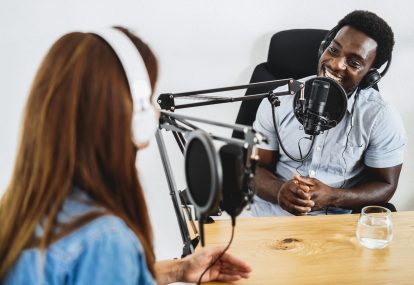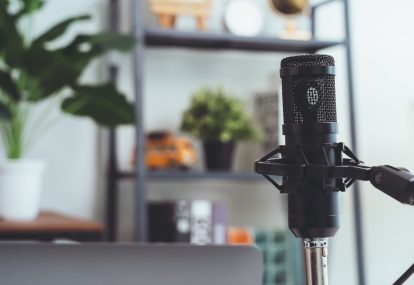While radio broadcasts and podcasts share a few similarities, they also couldn’t be more different. In this article, we’ll discover some of the core features of each and explore the different attributes that differentiate one from the other.
Passive versus Captive Listening
How do you go about listening to the radio? If you’re like most people, it is likely that you’re carrying out a conversation (when you’re with someone) or you’re thinking of something else while a song plays on the radio. In other words, you are just listening passively majority of the time.
With podcasts however, it’s the exact opposite. Since a listener has to go out of their way to stream or download a particular content, it is evident they have an active interest to say the least. That means regardless of where they are, they are most likely to pay more attention as opposed to just listening passively.
Narrow Focus versus Broadcasting
Radio broadcasters target a broad and specific demographic. For instance, they can target males or females belonging to a particular age bracket. Getting high ratings in the demographics they are targeting will often translate to sales opportunities.
To appeal to their demographics, broadcasters need to offer a little of everything to everyone they are targeting. In most cases, it can mean dabbling in celebrity gossip, local news, station events promotion, and funny phone calls, among other things.
Unlike radio broadcasters, podcasters target a niche audience. That means they focus on particular interests, a group of hobbyists, or a geographic area. To make your podcast stand out, your challenge would be to offer something unique listeners won’t find anywhere else.
Appointment versus On-Demand Listening
Normally, radio listeners need to tune in at a certain time if they wish to listen to a particular program. Radio personalities and stations also have to adhere to those “set appointments.”
Unlike radio where people have to dictate the listener’s schedules, podcasts can be consumed at any time listeners deem convenient. In addition, listeners have multiple options when it comes to podcasts. They can either listen to it on their tablets, phones or computers.
Content and Time Constraints
Radio personalities need to fit everything in specific windows. In other words, if a particular show runs for an hour, a certain number of minutes will be divided into traffic, weather, commercials, and other static content.
In addition, radio hosts are required to adhere to FCC content guidelines. For instance, they are not allowed to say certain words on the air and they can’t be overly sexual. Violating said rules can result to fines, complaints, or even loss of the station’s FCC license.
Podcasters however have a lot more freedom in those areas mentioned. For starters, there’s no imposed time limit to podcasts. You pretty much have the freedom to cover a particular topic however long you want. As long as you deliver interesting and compelling content, you can expect your listeners to stick around.
Also, while podcasters have the option to air explicit content, exercising proper caution is still recommended. It’s still important to truly know how much foul language or sexual content your audience can really take. As with most things in life, moderation is key. Too much of anything might just put off your listeners and you can end up losing them for good.
Do you prefer podcasts over radio? Or is the latter more your cup of tea? Do let us know in the comments below!
Share this post!




